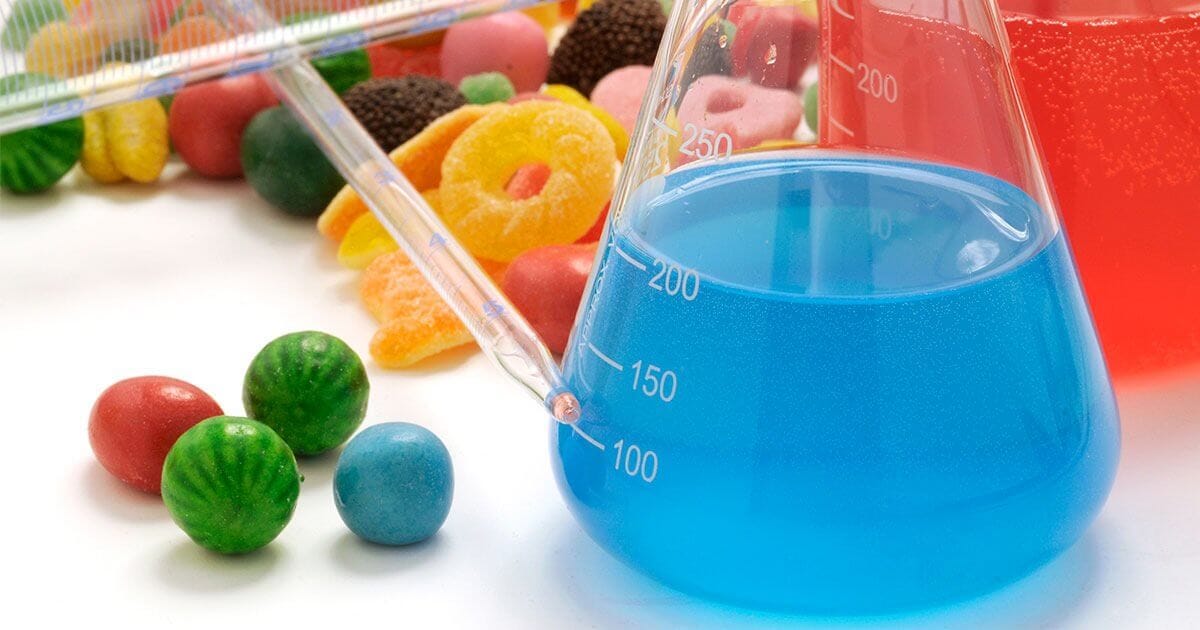Artificial food dyes, despite their vibrant allure, harbor a range of hidden dangers that impact human health. From potential carcinogenic properties to behavioral disturbances, these additives warrant careful consideration by both consumers and health professionals. Understanding the specific risks associated with each color and exploring safer alternatives is essential for informed dietary choices and advocating for healthier food options.
What are the Dangers?
Red Dye (e.g., Red 40):
Red food dyes, notably Red 40, have been linked to potential carcinogenicity. Studies suggest that Red 40 may contain contaminants associated with cancer. The Center for Science in the Public Interest (CSPI) advises consumers to steer clear of products containing Red 40. Several European countries have enacted bans or strict regulations on Red 40 due to health concerns.
Yellow Dye (e.g., Yellow 5 and Yellow 6):
Yellow food dyes, including Yellow 5 and Yellow 6, are associated with hypersensitivity reactions and behavioral disturbances, especially in children. Research indicates that these dyes can exacerbate hyperactivity in children with ADHD. Regulatory bodies in Europe, such as the European Food Safety Authority (EFSA), have expressed concerns about Yellow 5 and Yellow 6, prompting restrictive measures.
Blue Dye (e.g., Blue 1 and Blue 2):
Blue food dyes, such as Blue 1 and Blue 2, have raised concerns due to potential carcinogenic properties and behavioral effects. The EFSA has issued warnings regarding the safety of Blue 1 and Blue 2, leading to regulatory actions in Europe to limit their usage or explore safer alternatives.
Green Dye (e.g., Green 3):
Green food dyes, notably Green 3, have been scrutinized for potential carcinogenicity. While research is ongoing, concerns exist regarding its safety. Regulatory bodies in some countries have taken measures to restrict or monitor the use of Green 3.
Orange Dye (e.g., Orange B):
Orange food dyes, including Orange B, have raised concerns for potential adverse effects. While research on its specific health impacts is limited compared to other colors, regulatory bodies have imposed restrictions on Orange B in some regions.
However, the concerns surrounding orange dyes generally stem from the potential health risks associated with synthetic food coloring agents as a group, rather than specific to orange dye alone.
The primary concerns with synthetic food dyes, including orange dye, revolve around potential hypersensitivity reactions, behavioral disturbances, and, in some cases, possible carcinogenic properties. Studies have shown that certain synthetic dyes, especially when consumed in large quantities or by susceptible individuals, may trigger allergic reactions or exacerbate conditions such as attention deficit hyperactivity disorder (ADHD) in children.
Caramel Coloring:
Caramel coloring, commonly used in various food and beverage products, has also drawn scrutiny due to potential health risks. Studies suggest that certain types of caramel coloring may contain compounds that pose carcinogenic properties. Specifically, 4-methylimidazole (4-MEI), a byproduct of caramel coloring production, has been linked to cancer in animal studies. While regulatory agencies such as the FDA have set limits on the amount of 4-MEI permissible in food products, concerns persist regarding its long-term effects on human health.
A Rainbow of Risks
While the information above offers a glimpse into the risks associated with each synthetic dye, commonly encountered in everyday grocery store items, the following study presents an in-depth and accessible study on the perils posed by these artificial food colorants. Feel free to download and share the document.
Safe Alternatives to Artificial Food Coloring:
Natural Food Coloring:
Embracing natural food coloring derived from plant-based sources provides a safer alternative. Ingredients like beetroot juice, turmeric, and spirulina extract offer vibrant colors without the associated health risks of synthetic dyes.
Annatto:
Annatto, derived from the seeds of the achiote tree, serves as a natural coloring agent widely considered safe for consumption. It imparts rich hues to foods without health concerns.
Vegetable Juices:
Vegetable juices, such as spinach and kale, offer natural pigments that enhance the visual appeal of foods without compromising health.
Alternative Options:
Watkins Assorted Food Dyes - No Artificial Colors
Color Garden - Pure Natural Food Colors
India Tree - Nature Based Vegetable Coloring
Read the Labels:
Understanding the risks associated with food dyes is crucial for making informed dietary choices. By advocating for safer alternatives and supporting transparent labeling practices, consumers can prioritize their health and well-being in the face of potential hazards posed by artificial additives.
Always read the labels.
Sources:
1. Center for Science in the Public Interest. "Food Dyes: A Rainbow of Risks." Retrieved from [https://cspinet.org/eating-healthy/chemical-cuisine#food-dyes](https://cspinet.org/eating-healthy/chemical-cuisine#food-dyes).
2. European Food Safety Authority. "Re‐evaluation of food colours: Scientific opinion of the Panel on Food Additives, Flavourings, Processing Aids and Materials in Contact with Food (AFC)." EFSA Journal, vol. 8, no. 7, 2010, p. 1615.
3. U.S. Food and Drug Administration. "Color Additives: FDA's Regulatory Process and Historical Perspectives." Retrieved from [https://www.fda.gov/industry/color-additives/color-additives-fdas-regulatory-process-and-historical-perspectives](https://www.fda.gov/industry/color-additives/color-additives-fdas-regulatory-process-and-historical-perspectives).




